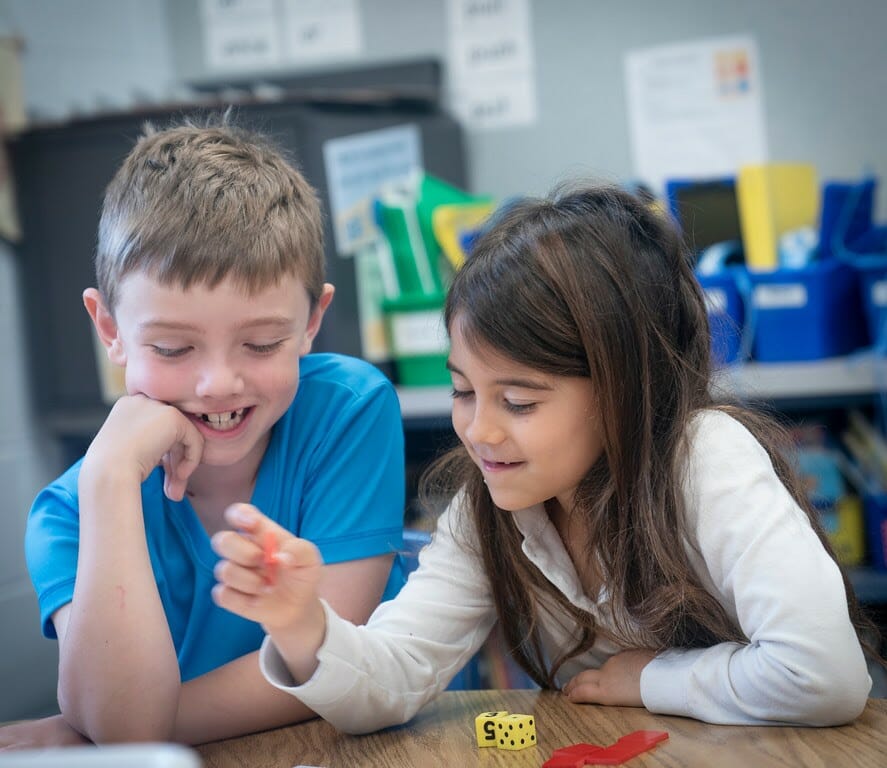Sarah Baxter, Lower School Math Specialist 2021
The “Fun” in Fundamentals: Multisensory Math Strategies

Dyscalculia is a math learning disability that makes number-related concepts and calculations challenging for some. Although it is sometimes referred to as “number dyslexia,” there isn’t nearly as much research or curriculum support for dyscalculia as there is for its language-based cousin. But by applying similar tried-and-true multisensory learning strategies, we are able to support our students and advance their comprehension–and their confidence.
In the words of Marilyn Zecher, a leader in multisensory math instruction, it’s an approach that is “appropriate for all, essential for some.” And here at McLean School, we couldn’t agree more. As with everything we teach, we believe it’s vital to recognize that people learn in lots of ways and everyone’s brain is a little different. When we come to a subject using a variety of pathways and modalities, using all of the senses, we engage the brain more thoroughly, which does wonders for learning and memory. So whether a child has math anxiety or a diagnosis of dyscalculia, they are able to feel and be successful with the subject.
So what does this look like in action? With students I work with at the kindergarten to grade 4 level, it might mean asking them to form different colored balls of Playdough for a lesson in addition, or cutting them in half or fourths to understand fractions. Our students are getting visual input, fine motor, touch, and something called proprioception, or the awareness of one’s body in space–a fully integrated experience that makes the math more meaningful.
The beauty of multisensory math education is that it’s not only fun in the moment, but research tells us that positive associations with a subject improve learning overall. And McLean teachers are all about positive associations! No math teacher I know came to this work because of a love of algorithms alone. My Masters in Elementary Education and Creative Arts in Learning, plays a major role in how I approach math instruction. Many people know that music and math are closely linked; I also have a student who says he “hates” math but loves to draw, so I have him illustrate the math problems as a way of integrating his interests and engaging the brain–and he tells me math is a lot more likeable now.
Getting to know our students and developing positive relationships with them is a big part of our Abilities Model®–McLean’s not-so-secret sauce that helps kids tap into their strengths as a way of getting at challenges. This, plus the benefit of small classes and curricular flexibility, adds up to a math experience that can be as enjoyable as it is educational.
-By Sarah Baxter, Lower School Math Specialist 2021